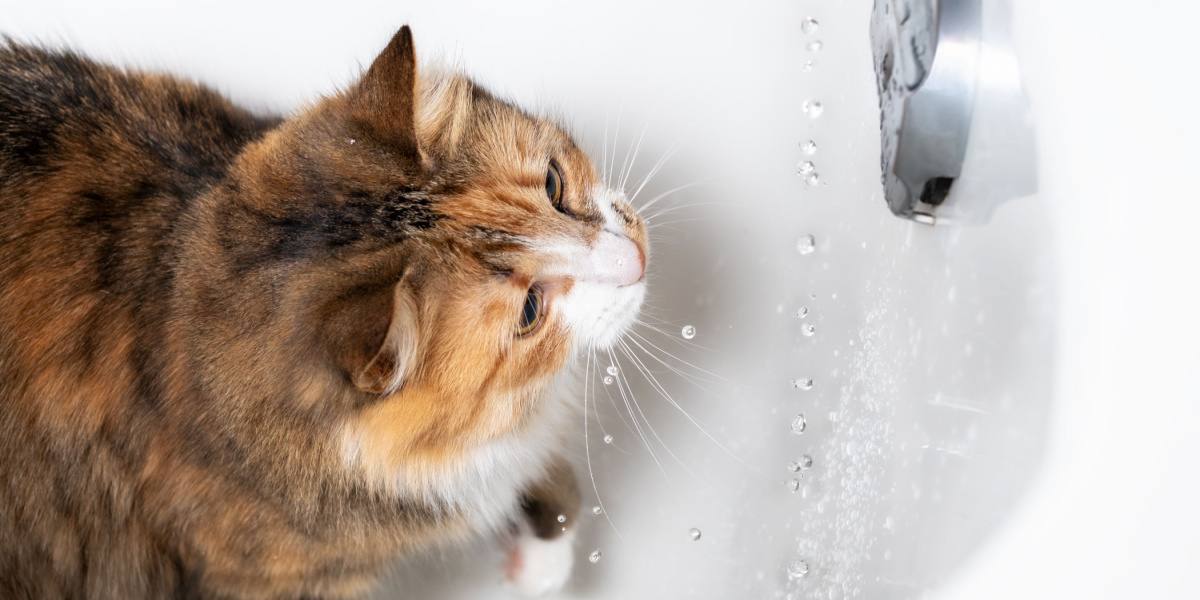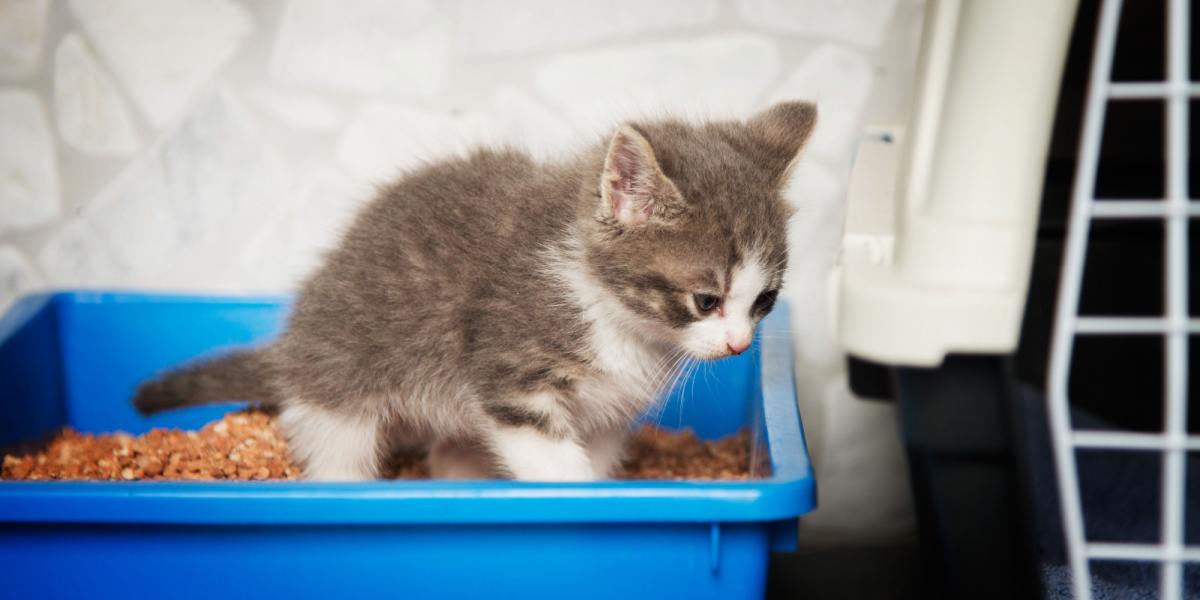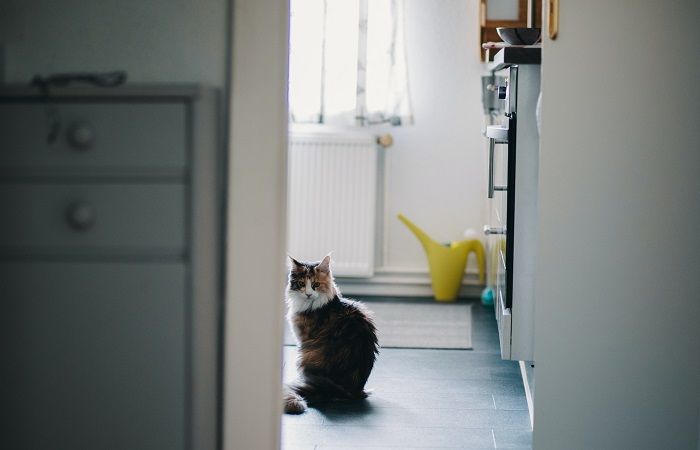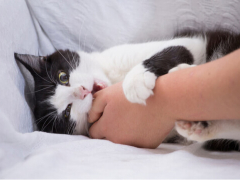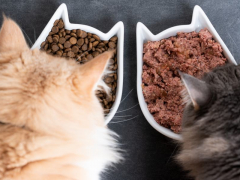Finding poop in your bathtub is always an unpleasant surprise. You might think your cat is just being naughty, but this is definitely not the case. There is an underlying reason they felt compelled to find a novel toilet, even if it is not obvious to you at first.
Cats might defecate in the tub due to behavioral issues, environmental factors, age-related reasons, and medical conditions. It is essential that you determine the underlying issue and importantly, never punish your cat. Special cleaners, improving the environment, adapting litter boxes, and reducing stress can all help to address this problem.Key Takeaways
A change in toileting habits should not be ignored. This article will examine the most common reasons your cat might poop in the tub.
1. Behavioral Issues
Other pets
Cat that live with other pets in the household can experience stress, which might affect their habits. In multicat households, cats might develop their own territories within the home and be reluctant to cross paths. In addition, cats often avoid using a litter box that another cat frequents.
In fact, it is recommended that you provide one more litter box than the number of cats in the household. For instance, if you have two cats, you should have three litter boxes. Cats also must feel secure while using their litter box. If dogs tend to chase cats, they might feel unsafe using a litter box at ground level. The bathtub is an enclosed space in a quiet room where they might feel at ease to do their business undisturbed.
A cat’s behavior is hugely influenced by anxiety. Cats are extremely sensitive, and it doesn’t take much to spook them. If there are home renovations, visitors, or a new baby, this can lead to your cat feeling more vulnerable than usual. If you have a cat that ventures outdoors, new cats in the neighborhood might make their life difficult.
Even cold weather and rain can cause your cat to feel that a trip outdoors to poop is not worth their time when there is a perfect spot indoors in the warm. Even if you have a cat that generally toilets outdoors, a litter tray should always be available inside.
If you have a new feline addition to the family or changes in the home, your cat needs time to learn where the litter tray is. In the meantime, the odd toileting accident might be expected. If you change your cat’s litter, do this by gradually mixing in a little more of the new litter over several days.
2. Litter Box Setup
Many cats are very particular about the surface that they eliminate on. Cat litter varies widely in its texture and appearance, and cat’s have individual preferences. Ideally, the type of litter you choose should be fragrance-free and dust-free.
Litter Box Cleanliness
Cats are fastidious and often reject dirty litter boxes or ones that smell of another cat. A mild whiff of their own scent is OK. Cleaning litter clumps each time your cat pees or poops is important but washing out with soap and water can be a weekly task if there is no heavy soiling.
Litter Box Style
Think carefully about your cat’s needs before you choose your litter box, and be prepared to adapt according to their behavior. Some cats have an aversion to covered litter boxes as they feel trapped and overwhelmed by nasty odors.
However, other cats prefer the safety of being hidden when they are pooping. Low-sided litter trays are helpful for older arthritic cats that struggle to climb in and out of the box. In contrast, high-sided trays can be perfect for cats with a high urine spray. Read more about cat litter boxes and some insightful litter box reviews.
Litter Box Location
Think carefully and place the tray somewhere quiet, away from loud appliances and places of high footfall. You can’t expect your kitty to be relaxed enough to poop right next to your noisy washer-dryer. Often, keeping the litter box out of sight and away from people helps.
If your cat has to go through a busy room to reach their litter box, it can be a deterrent to using it. In a multi-story home, you need one litter box on each floor. Finally, no one likes to poop where they eat, so make sure that the litter trays are as far away from your cat’s feeding spot as possible.
3. Lifestage
Kittens need low-sided litter boxes for easy access.
Young Kittens
It can young kittens some time to learn to use their litter box. Most kittens will take around four weeks to use their litter box reliably. This requires some patient training by their pet parent.
Gently placing your kitten in the litter after every activity transition throughout the day can help them associate the litter box with toileting. For example, your kitten might need to pee or poop after eating, drinking, sleeping, and playing. Read more about litter box training your kitten here.
Think carefully about the litter box size, shape, and placement. You want to make it as easy as possible for those little paws to access the litter should they suddenly feel the urge to go. If your kitten has worms or other parasites, this might affect their poop, so be sure to discuss worming with your vet.
Geriatric Cats
A senior cat often adapts their toileting habits to their needs. You might find that your cat is becoming stiffer as they walk due to arthritis. This affects their ability to climb onto the countertops and into high-sided litter boxes.
Ensure litter boxes are easy to access for your cat and, ideally, at ground level, in a safe space away from other pets and people. Larger litter boxes can help with any discomfort and fidgeting while they find the perfect spot to poop, and low sides are essential.
You might find that your cat no longer wants to defecate outside, and you need extra litter boxes in the home. Older cats also suffer from cognitive dysfunction (feline dementia), which causes confusion and problematic behaviors. Other signs of senility include constant meowing, staring into space, and being generally unsettled.
If you think your cat is showing symptoms of brain aging, your vet can offer treatment and dietary options that might help. They can also signpost you to the best behavioral advice to help your cat as they age.
4. Medical Conditions
Several health issues might cause your cat’s toileting habits to change. Some of the most common include:
Digestive Disorders
These can be highly unsettling, and your cat might need to poop with great urgency. Conditions such as inflammatory bowel disease or gastroenteritis can lead to frequent bouts of diarrhea.
Signs that your cat needs an urgent vet check include:
- Passing large volumes of watery diarrhea
- Passing diarrhea that has blood in it
- Signs of being generally unwell or not eating and drinking
- Mild diarrhea that continues for more than two to three days
Cystitis and Feline Lower Urinary Tract Disease:
These issues might cause your cat to poop in unusual places while straining to pee. If your cat can’t pass a regular stream of urine, keeps returning to the litter box, and seems distressed, this should prompt an immediate vet check. A blocked bladder is a critical emergency that can be life-threatening. Read more about feline idiopathic cystitis here.
Constipation
If your cat is backed up it can cause inappropriate elimination. Pain associated with trying to poop might cause your cat to have a negative association with their litter box. If so, your cat might start to avoid their usual toileting spot and go elsewhere.
Constipation can be caused by several conditions, such as:
- Furballs
- Eating prey
- Dehydration
- Arthritis
- Pelvic injuries
- Megacolon
If your cat shows signs of constipation, the sooner you see your veterinarian, the better. Constipation is much easier to fix and less likely to cause lasting damage if caught early.
Final Thoughts
Finding out what’s causing your cat to poop in the tub will help you take the proper steps to resolve the problem.
The golden rule for dealing with poop in the tub is to stay calm. Remember, your cat is not intentionally trying to upset you; punishing a cat is unacceptable. Besides, it can invoke fear and make the problem worse.
Try to approach the situation with empathy and a clear head so you can decipher what exactly is causing this issue. If you feel totally perplexed, your vet can help you distinguish between physical and behavioral issues.
Related Links:
- Diarrhea In Cats: Causes, Symptoms, And Treatment
- Cat Constipation: Causes, Treatment, & Remedies
- Urinary Tract Infection In Cats
- Feline Idiopathic Cystitis: Causes, Symptoms, & Treatment
Frequently Asked Questions:
How can I stop my cat pooping in the tub?
If your cat is defecating in the bathtub, shower, or sink, you must address the underlying issue as a priority. Make sure you clean the tub extremely well. Enzymatic cleaners help to eliminate odors that humans might not even detect. If your cat is regularly pooping in the tub, then closing the bathroom door is the simplest solution.
But beware that this may redirect them to poop elsewhere in the house. Some cats choose the bathroom as it is quiet and away from the household hustle and bustle. You might consider keeping a covered litter tray in the bathroom if this is the case.
How can I stop my cat pooping around the house?
Changing your cat's behaviors can be challenging, particularly if they are anxiety driven. Apart from addressing the underlying cause, there are a few simple things that you can try. Cleaning floors, rugs, and walls with an enzymatic cleaner and placing their food bowl on the poop site (after thorough cleaning) can act as a deterrent.
Preventing access to their favorite toileting spot for a period can help. Also, ensure that your cat's litter box is kept clean. Using a different substrate in the litter box might help (carpet, leaves/soil, shredded paper, sand), and then gradually introduce cat litter. And finally, pheromone diffusers near the litter box can help to reduce your cat’s anxiety.
-
https://cats.com/?s=potty+train Retrieved 11 December 2022.
-
https://cats.com/best-cat-litter-box Retrieved 10 December 2022.
-
https://www.bluecross.org.uk/advice/cat/health-and-injuries/cystitis-in-cats Retrieved 9 December 2022.
-
https://icatcare.org/advice/litter-trays Retrieved 11 December 2022.
